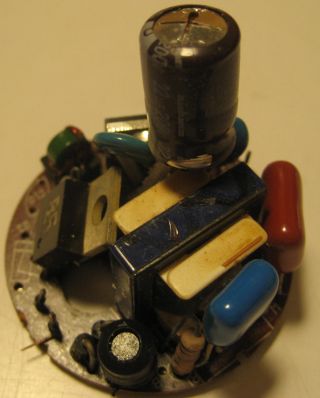Many of you may still remember the capacitor plague that caused massive motherboard failures back in the early 2000s. While the practice of using cheap and unreliable electrolytic capacitors in computer components has largely died down nowadays, it seems that the issue has cropped up elsewhere.
This time, the issue is with cheap capacitors used in some compact fluorescent light (CFL) bulbs. The following photo is taken from the electronic ballast of a CFL that failed during the first year of its use:

As you can see that the bulging top clearly shows signs of leakage. The capacitor used in this particular CFL is rated 22uf/200V with a maximum operating temperature of 105 degree (Celsius). Under normal conditions, this capacitor should be fine. But with a lot of interior light fixtures that are recessed into the ceiling, the heat generated during normal operation can easily approach this limit and causes the CFL to fail prematurely. Many failed CFLs I had over the past few years exhibited similar capacitor problems. And apparently, the general quality issue of CFLs has been concerning.
It seems to me though that the easiest way to fix this issue is for manufacturers to use electrolytic capacitors with higher operating temperature rating and lower ESR. Since the majority of CFL electronic ballasts utilize only one electrolytic capacitor, the increase in cost should be minimum.

